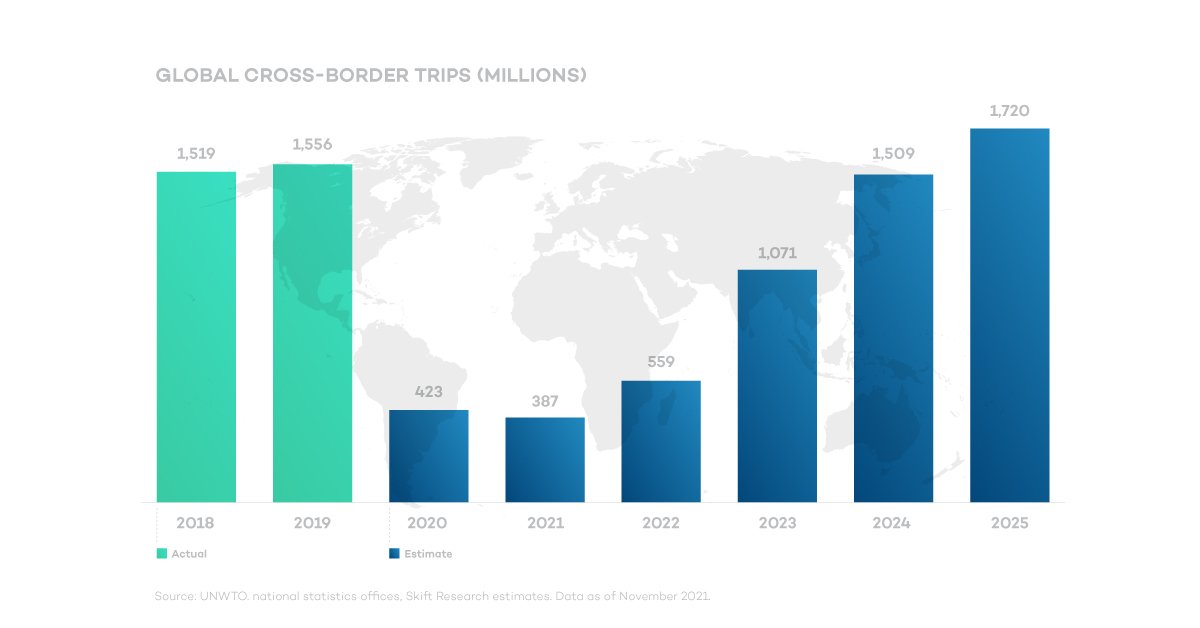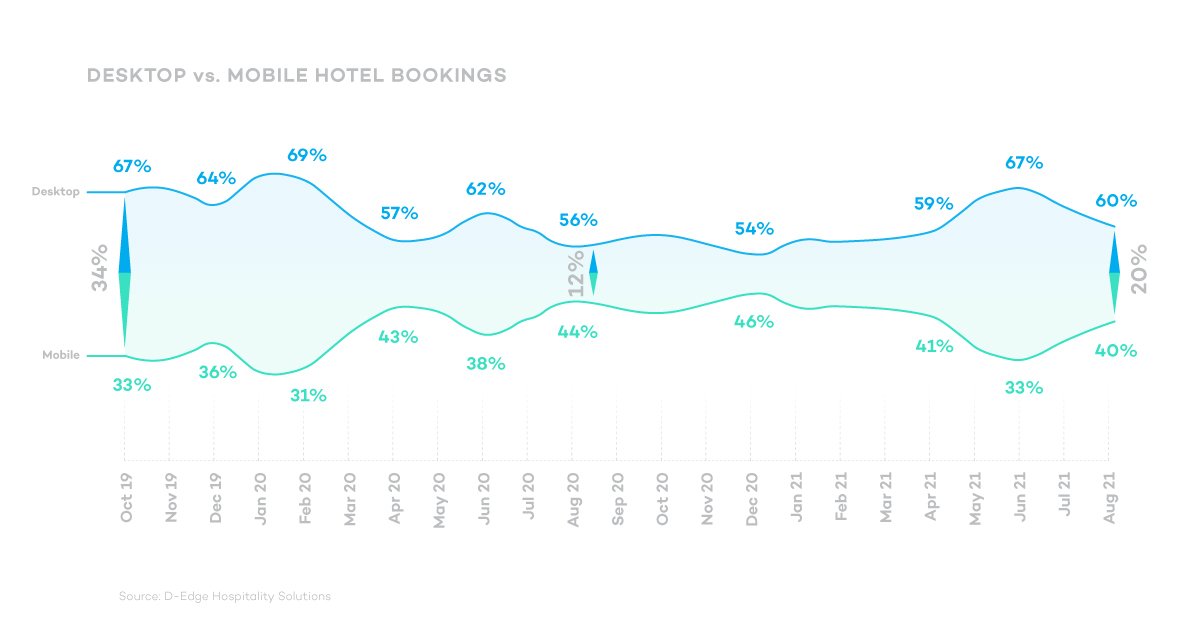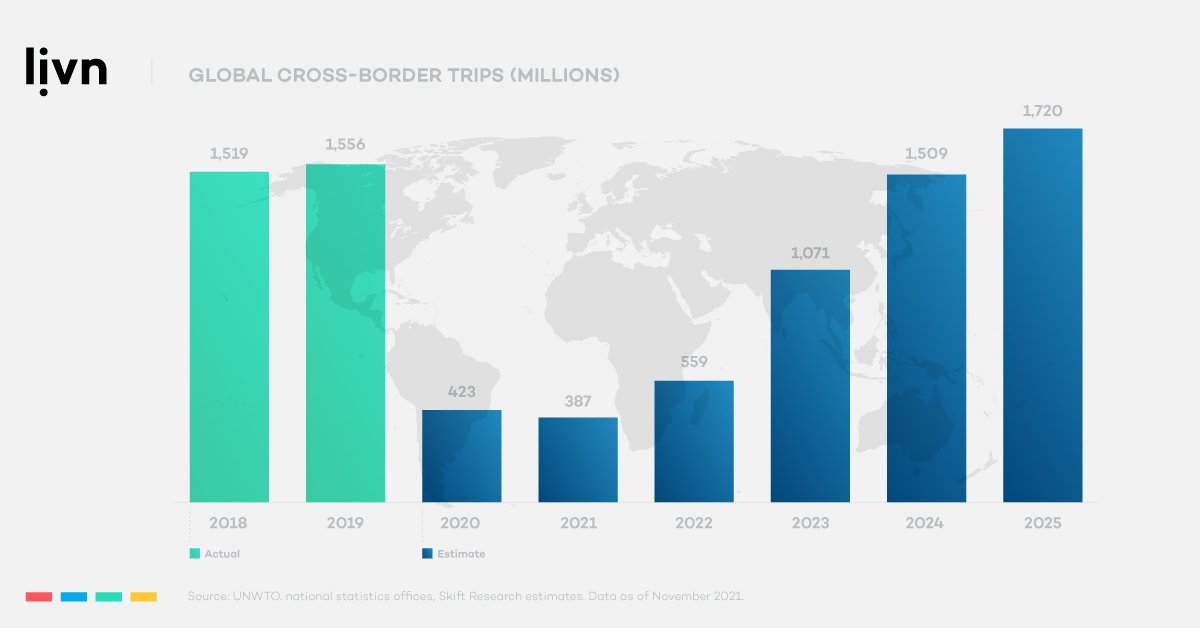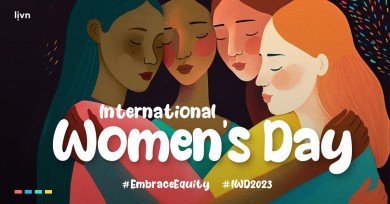Last year marked some incredible events for the tours, activities and attractions sector. For every variant and restriction, it felt like a silver lining has helped shape the landscape for travel businesses going into 2022.
In this post we’ll be recapping the three biggest game-changers of last year, and the trends we expect to see in 2022.
What you couldn’t miss in 2021…
1. Google facilitating direct bookings for travel customers
Last year, Google invested in tools and features that drive direct customer interaction with businesses.
Google Maps
Google Maps has stepped firmly into the forefront for local hospitality businesses in map results to travellers as they search them more visible. The app's new ‘Area Busyness’ also allows travellers to avoid crowded areas and beat the queues for a much better experience.
It comes as no surprise that Google Maps surpassed Uber as the top downloaded travel app in 2021 with over 106 million downloads.
‘Things to do’
2021 also saw the end of ‘Reserve with Google (RwG)’ program and the launch of ‘Things to do’. Google introduced the new program to allow tours, activities and attractions to leverage search results and get more direct bookings. This has created new ways for operators to regain control over distribution, content and the customer journey.
Philipp Schindler (Chief Business Officer at Google), shared why Google has taken this approach saying, “This is part of our larger effort to ensure people have access to all offers available to them by providing free and easy ways for businesses to connect with people on Google. We made it free for partners to participate in Google Flights early last year, and in April we opened our Shopping tab to free listings for online retail. Over time, we will continue building this open platform, so that all partners will have even more opportunities to highlight their information and help people book a flight, find a place to stay, or explore a new destination."
Livn is Google’s official global connectivity partner for ‘Things to do’ powering the native ‘Official Site’ button allowing tours, activities and attractions to avoid commissions, increase their profit margin, boost direct traffic, and stay competitive.
Steve Martinez (Livn Founder & CCO) said, “We are pleased our official relationship with Google happened under the Google ‘Things to do’ model, which we believe is more inclusive and powerful for the owner of the attractions, rather than giving more power to the established intermediaries such as OTAs.”
2. Domestic Travel becomes the Preference
As a result of international restrictions and with international travel not expected to recover until 2024, domestic tourism spiked as a new preference among travellers in 2021.
While international travel decreased across all regions according to the ICAO (International Civil Aviation Organisation) people have been taking more time to explore what is on offer locally.

This is likely why Trip Advisors’ Travel Trends Report 2022 shows that most consumers across all markets have said that they will continue travelling within their home country. In fact, 50% of Japanese respondents and 68% of US and Australian respondents said they were likely to travel domestically in 2022.
3. Increased Travelling Complexity
Not every game-changer is positive and unfortunately, it’s becoming increasingly complex for travellers to book trips themselves, particularly when it comes to international travel.
Localised restrictions, guidelines, last-minute changes in availability, COVID-19 testing, and new variants all contribute to making bookings difficult. In some countries, testing, vaccination requirements, and mask-wearing rules are different in various regions. Therefore, it’s becoming more important than ever for travellers to use booking assistants and agents to avoid disappointment.
Hamilton Island had to cancel both holiday bookings and day trips due to staff shortages impacted by isolation rules. As a result, two-weeks’ worth of bookings for the managed guest houses and associated activities were temporarily closed. Travellers were encouraged to contact their booking agents to arrange alternatives at the last minute. Something that would have proven incredibly difficult for those who booked directly.
What To Expect in 2022…
Transitioning into 2022, despite the restrictions and new variants, many tours, activities and attractions businesses are becoming more resilient and creative with their offerings in the process. As a result, here is the trends we can expect to see in 2022:
1. A Focus on Exclusivity
As businesses reduce capacity for safety and staff shortages, travellers are also hoping to avoid the crowds. It is safe to say that high-volume travel products are out, and exclusivity is in. 81% of Australian tourists are hoping to avoid crowded areas as part of a reduction strategy to avoid COVID-19 according to the University of Queensland.
Operators can use this to their advantage by focusing on quality over quantity. They can add exclusivity to their products with ideas such as; full access to sites, never seen before experiences, or even complete flexibility to match the traveller’s schedule. This can add value, particularly to commonly busy attractions.
2. International Travel will start its Comeback
While it is true that international travel is not predicted to fully recover until 2024, Skift predicts that we will see a 44% increase in international travel in 2022 signaling the start of its recovery. Unfortunately, the same report shows that global recovery is happening unequally, and as a result, it is likely the complexity of bookings for travellers will remain for some time.
For operators, providing flexibility, live availability, and uncomplicated booking journeys will improve experiences that will help create a sense of loyalty and appreciation from travellers during this uncertain time.

3. A Focus on Remote Working
The Australian Bureau of Statistics recorded that 41% of employed people were regularly working from home as of November 2021. As a result they are saving an estimated AU$3,546 per annum in generalised costs.
As hybrid and remote working become the norm, particularly in line with technology advancements brought on by COVID-19, this will likely be a trend that continues throughout 2022. Making the most of this increased cash flow and flexibility could see an increase in short breaks, long weekend bookings, and more importantly, travel outside of traditional peak periods.
Hotels and hospitality businesses must be up to date with technology and provide Wi-Fi as a standard to accommodate remote workers. Particularly with a predicted 3.7 million Americans expected to become digital nomads this year, representing an addressable market of $972 million per year.
Operators can use this market to create more demand during off-peak seasons when bookings are traditionally lower, which can also serve as an opportunity to provide more exclusivity in the offering.
4. An Increase in Mobile
Digitisation has not just stopped at businesses. Now, consumers are also more tech-savvy when booking their travel. While the rise in mobile usage is not new, travellers feel comfortable completing larger purchases like holidays on a mobile device. According to Skift there is less of a disparity between desktop and mobile bookings than previously was, which looks set to continue into 2022.

For operators, the solution to meet this demand lies in providing a seamless mobile customer journey from click to checkout. That is where programs like Google’s ‘Things to do’ play a key role in facilitating direct bookings.
5. An Appetite for New experiences
As restrictions ease, travellers are placing an emphasis on wanting to try ‘new’ activities and visit more locations in 2022. According to Trip Advisor, 75% of Americans say it’s important to see new places as part of their travel plans, a sentiment that has been echoed by 74% of Australians, 73% of Singaporeans, and 70% of Britons respectively.
More than this, lockdowns have offered fewer opportunities to participate in activities and now this looks like it will create a bounceback. 30% of Australian travellers say it’s more important ‘pack as many activities’ as possible into their travel plans and the same is true for 30% of US and 28% of UK travellers this year.
Travellers with an appetite for discovering new experiences actively search online and provide an excellent opportunity for travel businesses to leverage digitally. Not only should operators be focused on creating unique offerings, but marketing strategies for 2022 should also focus on visibility to this new potential customer base.
It is time for many operators to utilise new technologies and accommodate growing traveler needs, and we look forward to seeing how this year develops.
COVID-19 taught us to expect the unexpected but always focus on what's within our control. 2022 is our new opportunity to put forward our best practices and learn new skills.










